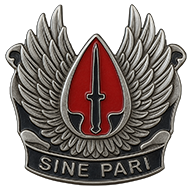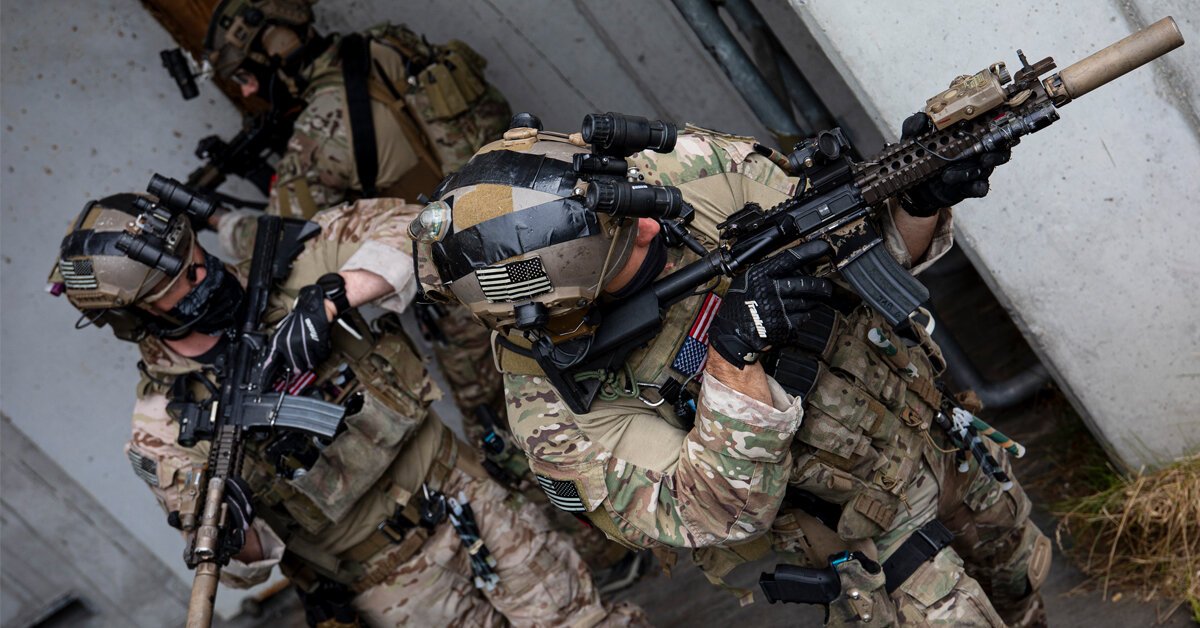Close Quarters Battle: Dynamic vs Deliberate
Purpose
CQB is not a single, fixed method — it’s a spectrum of tactics adapted to threat, environment, and mission urgency. The two primary approaches are Dynamic CQB and Deliberate CQB. Selecting the right method — and knowing when to transition — can directly affect survivability and mission success.
Dynamic CQB
A fast, aggressive method designed to seize the initiative and overwhelm the enemy through speed, surprise, and controlled violence of action.
When to Use:
- You have the element of surprise.
- Intel suggests limited or poorly prepared opposition.
- Hostage rescue or time-sensitive targets where seconds matter.
Execution Principles:
- Speed with Control — Flow room-to-room without unnecessary pauses, but never outrun your sectors.
- Sector Discipline — Each operator owns a slice of the fight; avoid crossfires and sector gaps.
- Muzzle Awareness — Control your weapon at all times in tight spaces to reduce friendly fire risk.
- Momentum Over Perfection — Accept imperfect clears if the flow remains unbroken and threats are neutralized.
Communications:
Minimal and urgent, only critical calls:
“Contact front!”
“Left clear — pushing!”
“Hallway right — flow!”
Strengths:
Overwhelms unprepared enemies, shortens exposure to danger zones, and maximizes shock effect.
Deliberate CQB
A slow, methodical approach that prioritizes control and security over speed. Best used when rushing offers no advantage and patience preserves the force.
When to Use:
- Night-time engagements where stealth is the advantage.
- Behind ballistic walls where speed is irrelevant.
- No hostages present.
- Facing a well-prepared enemy or unknown threat level.
Execution Principles:
- Pie-Slice Every Corner — Minimize exposure before committing into a room.
- Maintain Hard Sectors — Hold angles until relieved.
- Use Cover, Not Just Concealment — Ballistic protection changes what’s safe.
- Light Discipline — NVGs by default, white light only for PID.
- Controlled Tempo — Fully clear each sector before advancing.
Communications:
Frequent and detailed:
“Left corner clear to door, closed.”
“Contact likely — movement rear room.”
“Hallway deep — three doors right.”
Strengths:
Ensures thorough clears, suits high-threat or unknown interiors, and preserves stealth.
Risks:
Slower pace can give enemies time to prepare defenses. Requires discipline to prevent “speed creep.”
Transitioning Between Methods
Situations evolve, and so should the approach.
- Dynamic → Deliberate — Loss of surprise, suspected traps/IEDs, complex layouts, or non-ballistic threats.
- Deliberate → Dynamic — Hostage location identified, enemy morale collapses, or urgent time constraints arise.
Leader Role:
Leaders call the shift, but every operator must recognize cues and adapt immediately.
Example:
“All elements — transition to deliberate. Hold sectors, pie slice all corners.”
Mutual Oversight
Every operator is responsible for correcting lapses immediately — upward, lateral, or peer-to-peer.
Dynamic Example:
“Dagger 3, pick up pace — left flank uncovered!”
Deliberate Example:
“Dagger 2, kill light — you’re spilling into uncleared sector.”
Corrections should follow a clear structure: callsign → factual observation → actionable recommendation. Keep it professional, neutral, and mission-focused.
End State
Regardless of method:
- The approach matches mission and threat.
- Every sector is cleared, covered, and controlled.
- Communications are disciplined, corrections are immediate.
- Transitions happen without confusion or loss of control.
Dynamic CQB wins with speed.
Deliberate CQB wins with control.
The right method at the right time wins the fight.

